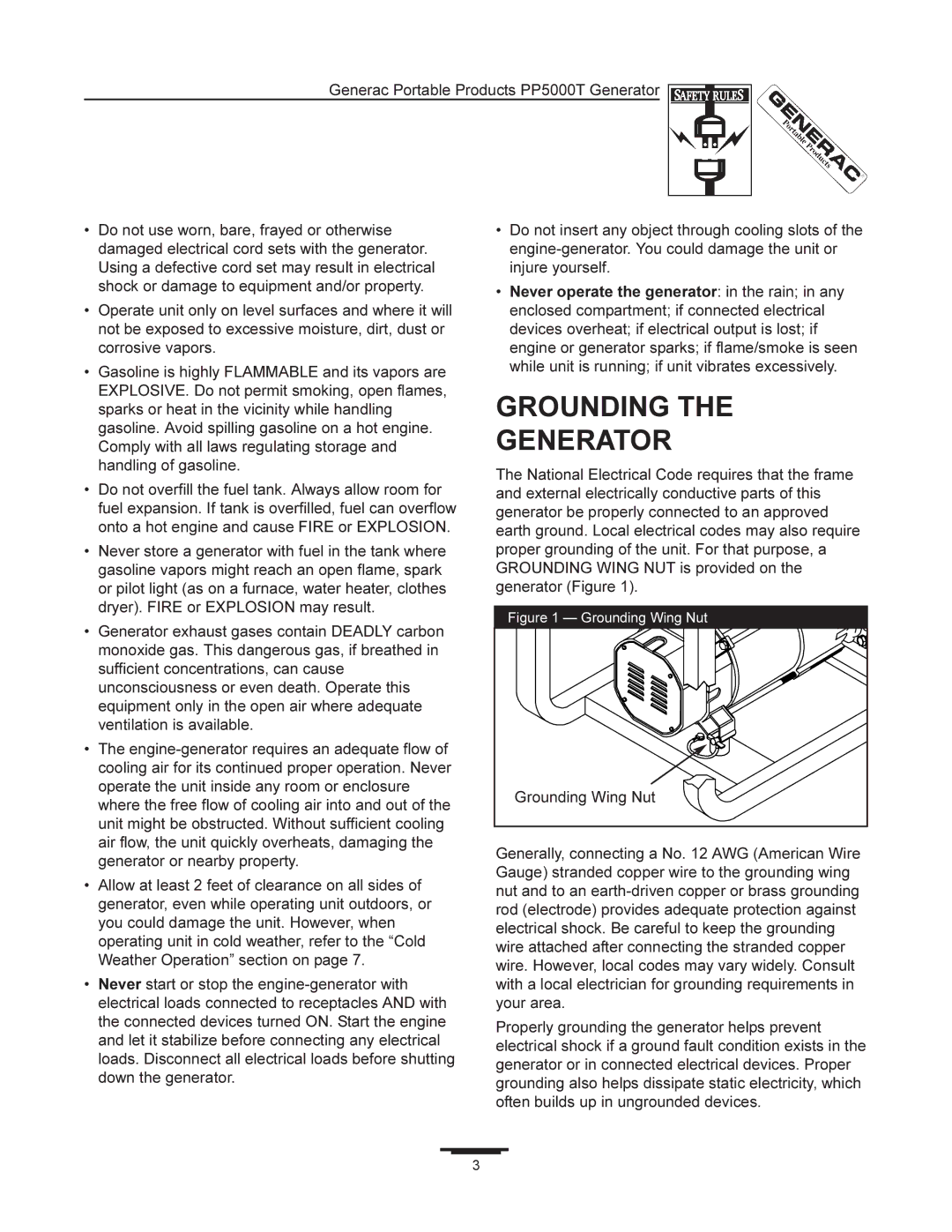
Generac Portable Products PP5000T Generator
•Do not use worn, bare, frayed or otherwise damaged electrical cord sets with the generator. Using a defective cord set may result in electrical shock or damage to equipment and/or property.
•Operate unit only on level surfaces and where it will not be exposed to excessive moisture, dirt, dust or corrosive vapors.
•Gasoline is highly FLAMMABLE and its vapors are EXPLOSIVE. Do not permit smoking, open flames, sparks or heat in the vicinity while handling gasoline. Avoid spilling gasoline on a hot engine. Comply with all laws regulating storage and handling of gasoline.
•Do not overfill the fuel tank. Always allow room for fuel expansion. If tank is overfilled, fuel can overflow onto a hot engine and cause FIRE or EXPLOSION.
•Never store a generator with fuel in the tank where gasoline vapors might reach an open flame, spark or pilot light (as on a furnace, water heater, clothes dryer). FIRE or EXPLOSION may result.
•Generator exhaust gases contain DEADLY carbon monoxide gas. This dangerous gas, if breathed in sufficient concentrations, can cause unconsciousness or even death. Operate this equipment only in the open air where adequate ventilation is available.
•The
•Allow at least 2 feet of clearance on all sides of generator, even while operating unit outdoors, or you could damage the unit. However, when operating unit in cold weather, refer to the “Cold Weather Operation” section on page 7.
•Never start or stop the
•Do not insert any object through cooling slots of the
•Never operate the generator: in the rain; in any enclosed compartment; if connected electrical devices overheat; if electrical output is lost; if engine or generator sparks; if flame/smoke is seen while unit is running; if unit vibrates excessively.
GROUNDING THE
GENERATOR
The National Electrical Code requires that the frame and external electrically conductive parts of this generator be properly connected to an approved earth ground. Local electrical codes may also require proper grounding of the unit. For that purpose, a GROUNDING WING NUT is provided on the generator (Figure 1).
Figure 1 — Grounding Wing Nut
Grounding Wing Nut |
Generally, connecting a No. 12 AWG (American Wire Gauge) stranded copper wire to the grounding wing nut and to an
Properly grounding the generator helps prevent electrical shock if a ground fault condition exists in the generator or in connected electrical devices. Proper grounding also helps dissipate static electricity, which often builds up in ungrounded devices.
3
